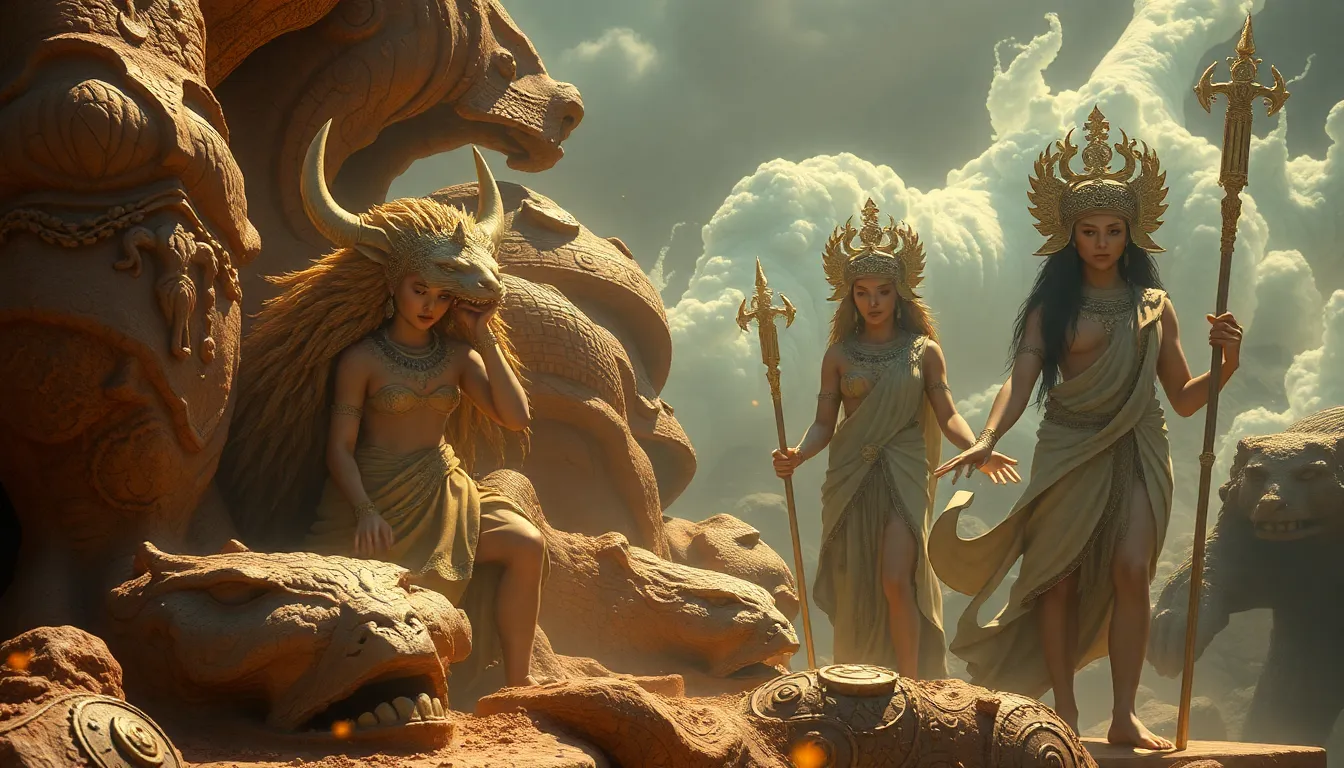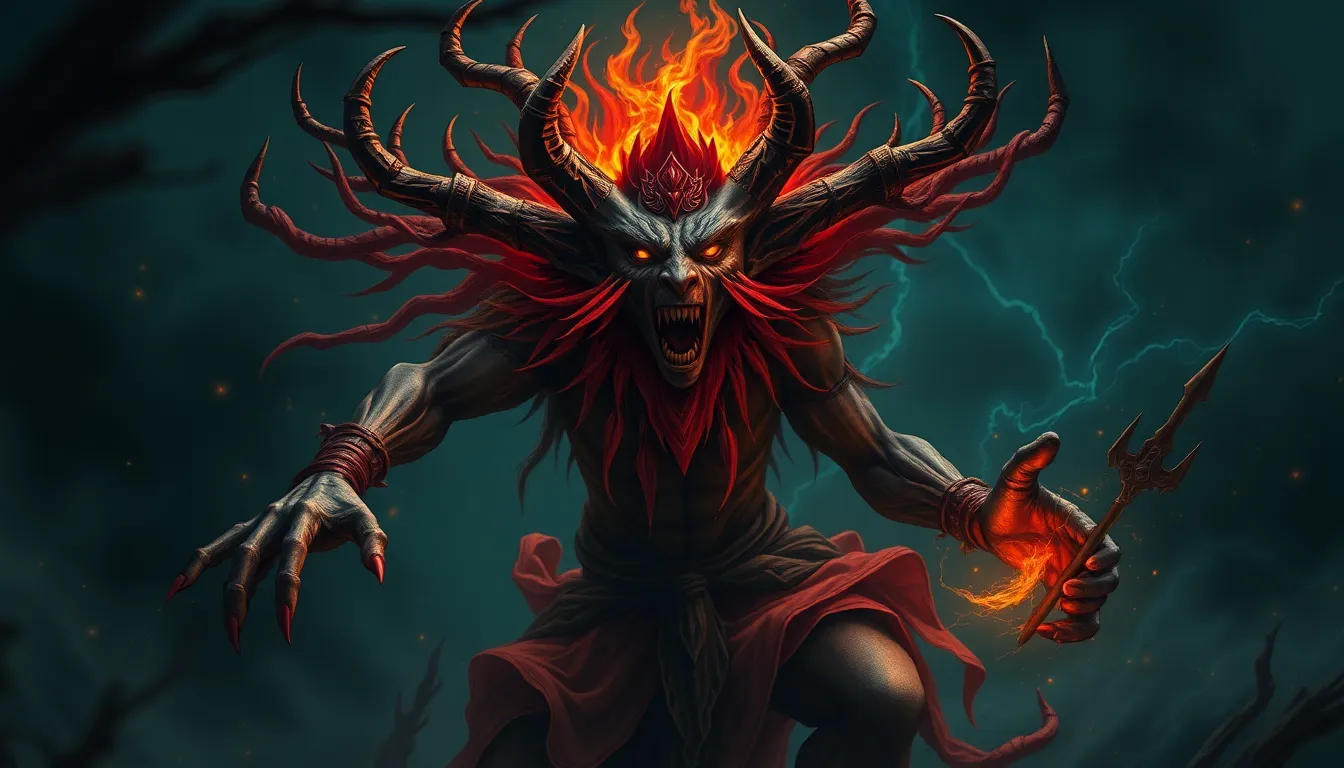Exploring the Myths of the Underworld: What Lies Beyond?
Introduction: The Allure of the Underworld
The concept of the underworld has fascinated humanity for centuries, appearing in various forms across cultures and time periods. Often depicted as a realm where souls journey after death, the underworld serves as a backdrop for myths that explore the nature of life, death, and what lies beyond.
Myths and stories about the afterlife not only shape perceptions of mortality but also provide comfort in the face of the unknown. They reflect societal values, fears, and hopes, creating a rich tapestry of beliefs about existence after death.
Historical Perspectives on the Underworld
Ancient civilizations held diverse beliefs about the underworld, each influenced by their unique cultural contexts.
- Mesopotamia: The Sumerians viewed the underworld as a dreary place called Kur, where all souls went regardless of their deeds. It was a shadowy realm lacking joy and light.
- Egypt: The Egyptians believed in a complex afterlife, where the soul would be judged by Osiris. The righteous would enter the Fields of Aaru, a paradise, while the wicked faced annihilation.
- Greece: In Greek mythology, the underworld, ruled by Hades, was a place of both punishment and reward. Heroes could enjoy Elysium, while others faced eternal torment.
This comparison reveals a spectrum of beliefs about morality, justice, and the fate of the soul after death, highlighting the cultural significance of the underworld in shaping ancient worldviews.
Common Themes in Underworld Myths
Despite the differences in beliefs, many underworld myths share common themes that resonate across cultures. These themes often address fundamental human concerns regarding morality and the fate of the soul:
- Judgment: Many cultures believe in a form of judgment after death, determining the soul’s fate.
- Redemption: Some myths allow for the possibility of redemption, suggesting that souls can change their fates.
- Punishment: The concept of punishment for sins is prevalent, often represented through vivid imagery and archetypes.
Iconic figures such as Charon, the ferryman of the dead in Greek mythology, Hades, the god of the underworld, and Anubis, the Egyptian god of mummification and the afterlife, serve as archetypes that embody these themes, guiding souls through their journeys.
The Underworld in World Religions
Major world religions present varied interpretations of the underworld, each adding depth to the understanding of the afterlife:
- Christianity: The Christian concept of the afterlife includes Heaven and Hell, where souls are rewarded or punished based on their faith and actions.
- Hinduism: In Hindu belief, the underworld (Patala) is one of many realms, with reincarnation playing a significant role in the journey of the soul.
- Buddhism: Buddhism views the afterlife as a cycle of rebirth (samsara), with the ultimate goal being enlightenment and liberation from this cycle.
While differences exist, common threads of moral consequence and the quest for a favorable afterlife experience connect these beliefs, illustrating humanity’s enduring questions about existence beyond death.
Symbolism and Imagery of the Underworld
Symbolism plays a crucial role in how cultures depict the underworld. Various elements serve as powerful representations of death and the afterlife:
- Rivers: Often symbolize the transition between life and death, such as the River Styx in Greek mythology.
- Gates: Represent the threshold between worlds, as seen in the gates of the underworld guarded by deities.
- Gardens: Symbolize eternal peace and paradise, contrasting with the bleakness of punishment.
These symbols not only reflect cultural values but also evoke intrinsic fears and hopes surrounding death and the afterlife. They serve as metaphors for the journey of the soul and the choices made in life.
Psychological Interpretations of Underworld Myths
Beyond cultural interpretations, the underworld can also be viewed through a psychological lens. The underworld often serves as a metaphor for the subconscious mind, housing repressed fears and desires.
Carl Jung’s concept of the “shadow” archetype plays a significant role in this interpretation. The shadow represents the parts of ourselves that we deny or suppress. Underworld myths can be seen as journeys into this shadow self, confronting fears and ultimately seeking integration and wholeness.
Contemporary Reinterpretations of Underworld Myths
In modern literature, film, and art, the themes of underworld myths continue to resonate. Contemporary works often reinterpret these ancient narratives, reflecting societal changes and evolving beliefs about life and death.
Examples include:
- Literature: Works like Neil Gaiman’s “American Gods” and Dante Alighieri’s “Inferno” explore the complexities of the human experience in the context of the afterlife.
- Film: Movies such as “What Dreams May Come” and “Coco” delve into the themes of death and the afterlife, blending traditional myths with contemporary storytelling.
- Art: Artists often use imagery from underworld myths to express existential themes, illustrating the human condition through visual metaphors.
These reinterpretations highlight the ongoing relevance of underworld myths in addressing fundamental questions about existence and the human experience.
Scientific Perspectives on the Afterlife
The intersection of science and mythology has led to intriguing investigations into the nature of consciousness and the afterlife. Research into near-death experiences (NDEs) has garnered attention, with many individuals reporting vivid experiences that mirror mythological depictions of the afterlife.
Scientific inquiries explore:
- The brain’s activity during moments of clinical death and its implications for consciousness.
- Common themes in NDEs, such as feelings of peace, encounters with deceased loved ones, and journeys through tunnels or lights.
While science does not provide definitive answers, it creates a dialogue with mythological beliefs, inviting a reexamination of what lies beyond death and the nature of existence.
Cultural Practices Surrounding Death and the Underworld
Rituals and customs related to death reveal much about how cultures view the underworld and the afterlife. These practices often serve as a means of honoring the deceased and facilitating their journey into the afterlife.
- Funerary Customs: Vary widely, from elaborate burial rituals in Ancient Egypt to simple cremation practices in Hinduism.
- Memorials: Serve to commemorate the dead and provide a space for the living to reflect on mortality.
- Rituals: Such as Día de los Muertos in Mexico, celebrate the lives of the deceased and reinforce cultural connections to the afterlife.
These practices highlight the significance of the underworld in shaping societal attitudes towards death, emphasizing the importance of remembrance and respect for those who have passed.
Conclusion: The Enduring Fascination with the Underworld
The myths of the underworld hold a profound significance in understanding human existence. They reflect our deepest fears, hopes, and questions about life and death.
As we continue to grapple with the mysteries of mortality, these ancient narratives remain relevant, resonating through modern society and inspiring reflection on what



